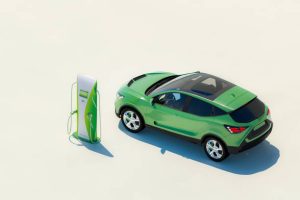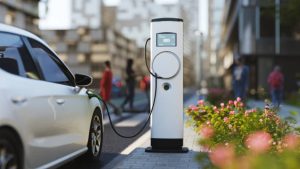WHY SELECT AN EV?
You may have selected an EV as your next car for a variety of reasons. The government has made it financially advantageous to choose an EV as a company or salary sacrifice car because it wants drivers to make the changeover before the prohibition on new internal combustion engine (ICE) vehicles in 2030. Additionally, they suggested effectively banning the sale of new gasoline and diesel vehicles beginning in 2035.
The environmental benefits of EVs are another factor. They are built with more environmentally friendly materials, run on renewable energy rather than finite fossil fuels, and omit nothing from their tailpipes. Even their batteries can be recycled, lowering the number of components that will need to be manufactured in the future.
The zero emissions of an EV are beneficial to both the environment and our overall health.
TYPES OF EV
Three different EV kinds exist:
- Hybrid, which still has an internal combustion engine connected to an electric motor. The battery charges as you go along, as you slow down. Regenerative braking is the term for this.
- Plug-in hybrid, where the battery is charged both by regenerative braking and plugging the vehicle into a charging station
- The battery of a battery electric vehicle (BEV), which only has an electric motor, is charged by plugging the vehicle into a charging station.
The hybrid’s combination of a gasoline motor and an electric battery gives it additional propulsion, even though it is intended to be environmentally beneficial. The battery is a complement to the ICE and provides additional support rather than serving as the engine’s primary power source.
Although pollution and emission levels are lower in PHEVs than in conventional ICE vehicles due to the use of fossil fuels, they should still be taken into account.

KNOWING YOUR CHARGING ACTIONS
The majority of EVs are connected to a smartphone app that lets you keep tabs on both your driving and charging habits.
The major distinction between operating an ICE and an EV is making sure you always have enough electricity to drive from point A to point B. You must drive into the closest gas station when the fuel gauge needle on a typical car is getting close to the letter “E.” You must re-charge your EV’s battery when it starts to lose power.
A prevalent misperception concerning EVs is that they don’t have many charging stations available across the nation. In actuality, there are over 42,000 of them spread throughout over 15,500 locations. To get an idea of how much public charging will cost, utilize our free charging calculator.
A map displaying the locations of your nearby public charging stations based on your GPS will probably be included in the app for your car. You might also make use of a tool like Pod-Point.
There are requirements for qualifying, but EV owners who live in a house with off-road parking can apply for a government grant to help pay for a home charging point. All newly constructed residences with off-street parking, workplaces, and supermarkets will be required by law to have charging stations, it was stated in November 2021. Your energy provider’s appropriate tariff and smart wall boxes will enable you to charge your electric vehicle (EV) at the lowest possible cost.
The online charging location tools will let you know how much it will cost to use them if you don’t have off-road parking at home or need to charge somewhere.
ETIQUETTE CHARGING
The use of public charge points is governed by a lot of common sense protocol. For all save the longest distances, your automobile doesn’t need to be fully charged. Try not to leave your car plugged in for any longer than is absolutely required, as others may also need to use the charging station.
WHAT SPEED?
Regenerative brakes on a hybrid or plug-in hybrid electric vehicle will work harder for you in cities where there is a lot of stopping and starting. On highways and other lengthy sections where you can maintain a consistent, good pace, the brakes’ settings will be less forceful, especially if you anticipate any slower-moving vehicles up ahead.
It’s critical to understand that not all EVs and charging stations operate at the same rate of charge. Only the highest charge rate that your car can handle may be used to recharge it. The car won’t charge any faster if it is plugged into a 28kW charger, for instance, if this is 7kW.
In a similar vein, you must also agree to the charge point’s maximum charging rate. Even if your car has an 11kW charging capacity, a 7kW charger will only allow it to charge at that speed.

Your battery’s charging time will increase with its size. Likewise, it will take longer to restore itself to full capacity the more you have depleted it. A 7kW charger would need about eight hours to fully charge a common 60kW EV battery.
You could only charge your car fully once each typical week because the majority of trips are under five miles long. However, the majority of drivers opt to regularly top off their battery.
